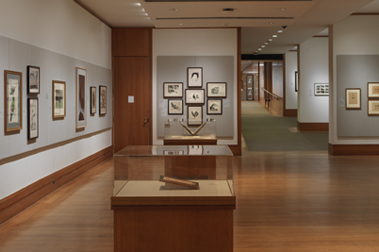Study for the Prophet Jeremiah (recto); Studies of a Horse Seen from Below and of a Man Seated on a Chair, Probably a Self-Portrait and an Off-Print in Brown Ink of a Nude Female Abdomen and Legs (verso)
Henry Fuseli Swiss
Not on view
Fuseli came from a family of artists but trained as a Zwinglian minister before visiting London in the 1760s and deciding to become a painter. His knowledge of the Old Testament and his admiration for Renaissance masters underscore this dramatic sketch of the prophet Jeremiah, made for an engraved illustration in Francis Willoughby’s Practical Family Bible (1772). Bold strokes of brown ink describe the elderly, enraged prophet who steadies himself on a staff as he raises an earthen vessel above his head. The Book of Jeremiah (19:11) describes the prophet’s dramatic denunciation of idol worshippers: "This is what the Lord Almighty says: I will smash this nation and this city just as this potter’s jar is smashed and cannot be repaired." Fuseli, like Blake, belonged to the first generation of Romantic artists in Britain who sought inspiration in poetry and intensely personal emotional and religious experience. About the time he made this drawing, however, Fuseli met Jean Jacques Rousseau and became disillusioned with traditional theology.
This image cannot be enlarged, viewed at full screen, or downloaded.
This artwork is meant to be viewed from right to left. Scroll left to view more.







